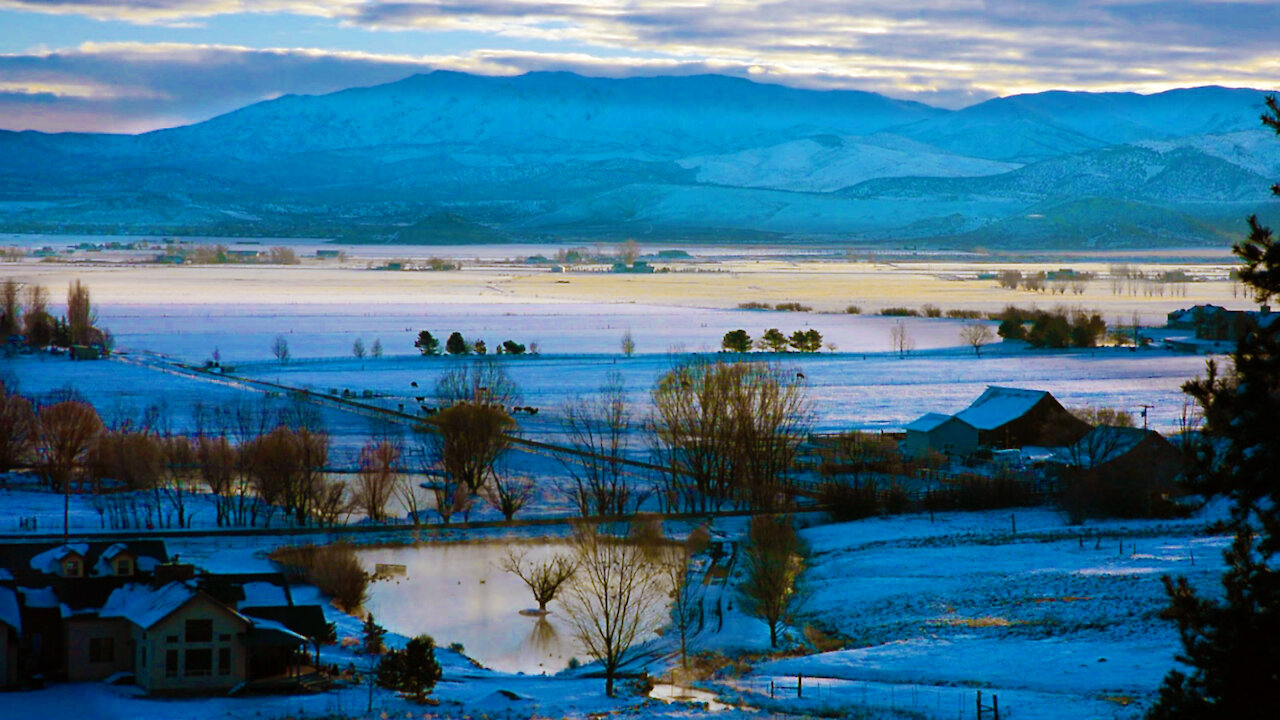Premium Only Content

Sierra Nevada sunrise. Winter time-lapse
Staying with some friends in Gardnerville, Nevada, we’re so close to the California border that we can see it from our kitchen window.
The farmers are out early every morning in the winter, driving their ATV’s and dropping off hay for the animals.
The vast majority of the Sierra Nevada mountain range lies in the state of California, although the Carson Range spur lies primarily in Nevada. The Sierra Nevada is part of the American Cordillera, an almost continuous chain of mountain ranges that forms the western "backbone" of the Americas.
The Sierra runs 400 miles (640 km) north-south and is approximately 70 miles (110 km) across east-west. Notable features include General Sherman, the largest tree in the world by volume; Lake Tahoe, the largest alpine lake in North America; Mount Whitney at 14,505 ft (4,421 m), the highest point in the contiguous United States; and Yosemite Valley sculpted by glaciers from one-hundred-million-year-old granite, containing high waterfalls. The Sierra is home to three national parks, twenty wilderness areas, and two national monuments. These areas include Yosemite, Sequoia, and Kings Canyon National Parks; and Devils Postpile National Monument.
More than one hundred million years ago during the Nevadan orogeny, granite formed deep underground. The range started to uplift four million years ago, and erosion by glaciers exposed the granite and formed the light-colored mountains and cliffs that make up the range. The uplift caused a wide range of elevations and climates in the Sierra Nevada, which are reflected by the presence of five life zones (areas with similar plant and animal communities). Uplift continues due to faulting caused by tectonic forces, creating spectacular fault block escarpments along the eastern edge of the southern Sierra.
The Sierra Nevada has played an important role in the history of California and the United States. The California Gold Rush occurred in the western foothills from 1848 through 1855. Due to its inaccessibility, the range was not fully explored until 1912
-
 0:04
0:04
AmplifiedLIFE
1 year ago $0.03 earned“Peep”-ing & Chirping Cardinal
122 -
 1:00:55
1:00:55
Mark Kaye
3 hours ago🔴 Trump Tells Tech Tycoons It's Time To Pay Up!
10.7K2 -
 LIVE
LIVE
Right Side Broadcasting Network
5 hours agoLIVE: President Trump Makes an Announcement - 9/5/25
2,706 watching -
 LIVE
LIVE
SportsPicks
2 hours agoCrick's Corner: Episode 77
34 watching -
 1:06:02
1:06:02
LindellTV
1 hour agoBREAKING: FBI Returns Mike Lindell’s Cellphone
12.1K6 -
 LIVE
LIVE
Jeff Ahern
1 hour agoFriday Freak out with Jeff Ahern
102 watching -
 7:33
7:33
Talk Nerdy Sports - The Ultimate Sports Betting Podcast
4 hours agoFriday Night Lights in BRAZIL 🇧🇷🔥🏈
1.76K -
 LIVE
LIVE
Reidboyy
1 hour ago $0.41 earned$20 Billion Dollar Warzone Tournament! Protect The President
61 watching -
 1:15:26
1:15:26
Tucker Carlson
3 hours agoWhistleblower Exposes the Real Puppet Masters Controlling the State Department and Plans for Gaza
54.9K40 -
 LIVE
LIVE
StoneMountain64
2 hours agoHelldivers 2 just KEEPS GETTING BETTER
55 watching